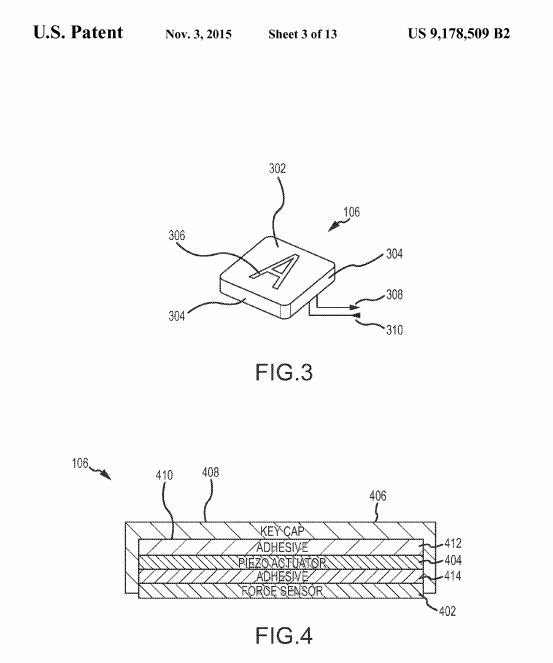Apple MacBook keyboards will be thinner, switchless, and will never wear out, according to new patent.
Since the unveiling of the 12 inch MacBook Retina, Apple’s new Butterfly mechanism has been extended to all MacBooks models, as an advanced method of designing keyboards, which offers a uniquely comfortable feel when typing.

With that said, it’s very likely that future MacBooks, as well as wireless keyboards for Macs, may one day do away with all mechanical components, and feature a switch-less design instead, according to U.S. patent number 9,178,509, filed November 3rd, 2015, which was initially published April 3rd, 2014.
The patent is titled simply “Ultra low level keyboard”, and the abstract describes it as a “...keyboard, or keyboard key that has a force sensor that measures the force imparted to the key when a user presses the key or rests a finger on a key...”. It goes without saying that the force sensor is very likely to be a similar sensor as the one used in Force Touch trackpads, with a similar feedback actuator which reacts in response to a keypress.
While the abstract seems rather simple, the description of the actual invention has a lot more to it.
Within claim 1 of the patent, the working principle is described, not only as a mere “Force Touch” fusion keyboard, designed to return a tactile feel through vibration actuators. The keys themselves are designed to physically deform, when pressed, in the same way as they would in a mechanical keyboard. The deformation, however, is performed by an actuator contained within the key cap, which is designed to simulate the behavior of a mechanical key, without the mechanical strain and wear associated with mechanical key presses.
Back in May, we have talked about Apple’s Fusion Keyboard design, as a concept that could someday incorporate both keyboard and touchpad. While such design is less likely to happen in the near future, this new patent shows a lot of promise, and considering that we have yet to have any definitive clue on what the new 2016 Macs will looks like, it’s not hard to speculate that any number of new technologies could make it into next year’s devices.